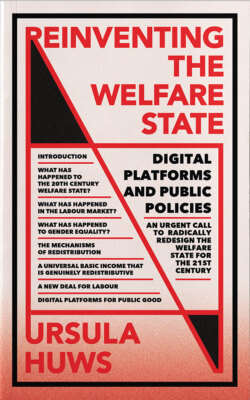Читать книгу Reinventing the Welfare State - Ursula Huws - Страница 21
На сайте Литреса книга снята с продажи.
CONCLUSION
ОглавлениеWe can conclude that, in the six decades since its establishment, the post-war welfare state has been transformed in character from one that, albeit to a limited extent, achieved a modest redistribution from capital to labour and provided a universal set of social protections, to its opposite: a state that redistributes wealth from labour to capital and, far from providing a safety net for its most vulnerable citizens, actually drives them into destitution if they fail to conform to its increasingly punitive terms. This transformation has been achieved under cover of an ideological subterfuge, with blame for misfortune being deflected onto other workers, or other groupings within an increasingly fractured working class. Different sections of the population have been played off against each other, while corporate interests have been rendered invisible, with the institutions of the welfare state playing a crucial role in the hidden transfer of wealth from the poor to the rich.
If we are to envisage positive ways forward, there is a need to look beyond these institutions and take a long hard look at what has actually happened in the labour market. Is it still even appropriate to think in terms of a ‘core’ workforce of organised workers and a peripheral army of casual workers waiting to take their place? This question is addressed in the next chapter.
